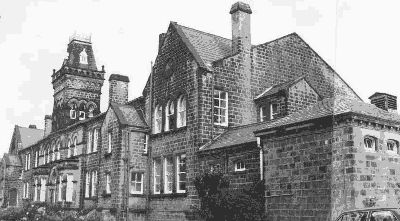The Workhouses
... /...
Les "workhouses" sont des bâtiments qui étaient appelés, jadis, La Bastille. Ces sortes de prisons ont été créés officiellement en 1834, par le "Poor Law Amendment Act", mais existaient déjà depuis la "old poor law" de 1601. Un "workhouse" était un lieu, souvant dans des zones rurales, qui accueillait au Royaume-Unis les personnes qui ne pouvaient subvenir seuls à leurs besoins, ils pouvaient y vivre qu'en échange de leur travail.
La vie était plus sévère à l'intérieur du "workhouse" qu'à l'extérieur. Les bâtiments étaient remplis de maladies à cause de la surpopulation et la famine était présente.
Il devait y avoir normalement que des personnes pauvres dans ces structures, mes malheureusement les personnes ayant un comportement non désiré comme les femmes veuves, les gens qui ont été malade ou fou, les orphelins, les vieillards qui ne sont plus capable de travailler pouvaient se retrouver dans la terrible union "workhouse".
Dans ces établissements, les femmes étaient séparées des hommes (y compris de leurs maris); et les enfants étaient séparés des adultes (et même de leurs propres parents).
Ils travaillaient 10h par jours, ils s'occupaient de broyer par exemple des os à la main pour produire de l'engrais.  Mais
des recherches ont annoncé que ce n'étaient pas toujours des os
d'animaux et les détenus mangeaient le peu de chair qu'il restait sur
ces maigres os... Ils se couchaient normalment à 20h. Les repas étaient silencieux, ennuyeux, prévisible et surtout sans saveur. Les repas étaient si maigres que c'était comme "un processus lent de la famine".
Mais
des recherches ont annoncé que ce n'étaient pas toujours des os
d'animaux et les détenus mangeaient le peu de chair qu'il restait sur
ces maigres os... Ils se couchaient normalment à 20h. Les repas étaient silencieux, ennuyeux, prévisible et surtout sans saveur. Les repas étaient si maigres que c'était comme "un processus lent de la famine".
"Life was meant to be much tougher inside the workhouse than outside, and the buildings themselves were deliberately grim & intimidating - they were designed to look like prisons. They were full of illness & disease brought about by over-crowding & the starvation diet.
When you were admitted to the workhouse, you were stripped, searched, washed & had your hair cropped. You were made to wear a prison-style uniform.
Women were at all times kept separate from the men, including their husbands. Children were kept separately from adults - even from their own parents.
A well known story tells how a labourer gave notice to leave the workhouse with his wife & children - only to be told: "You cannot take your wife out. We buried her three weeks ago".
In one instance, a girl aged 15 years died in the workhouse. Her records showed that she was born in the workhouse & had never been outside the place.
Aversion to the "house" was extremely strong. At Cuckfield in Sussex they had deep snow December 1836 & all outdoor work ceased. 149 desperate men applied for parish relief. 118 of them were offered the workhouse and 112 refused. Later another 60 men applied & 55 of them refused the "house". Of the 5 who were admitted, 3 left within hours of discovering what life in the workhouse was like."



 Edward Hopper was born on the 22nd jully, in 1882, at Nyack, New-York. His nationality is American. He was a painter. His artistic moove was the american sceanes. He painted in particular "Automat" (1927), "Chop Suey" (1929), "Nighthawks" (1942), "Office in a small city" (1953). His painting pictures influenced cinema. The Hopper's painting pictures have something which produce a feeling of an expection and suspens; and the film-makers are inspired his painting pictures. Finally, Edward Hopper died in his studio near Washington square in New-York City in 1967.
Edward Hopper was born on the 22nd jully, in 1882, at Nyack, New-York. His nationality is American. He was a painter. His artistic moove was the american sceanes. He painted in particular "Automat" (1927), "Chop Suey" (1929), "Nighthawks" (1942), "Office in a small city" (1953). His painting pictures influenced cinema. The Hopper's painting pictures have something which produce a feeling of an expection and suspens; and the film-makers are inspired his painting pictures. Finally, Edward Hopper died in his studio near Washington square in New-York City in 1967. She didn't like this place. For a week, she
She didn't like this place. For a week, she 
 First, the sky is ffaintly lit. It looks like the sceane is taking
place in the morning. There is a block of flates, it's film over the
rooves.
First, the sky is ffaintly lit. It looks like the sceane is taking
place in the morning. There is a block of flates, it's film over the
rooves.